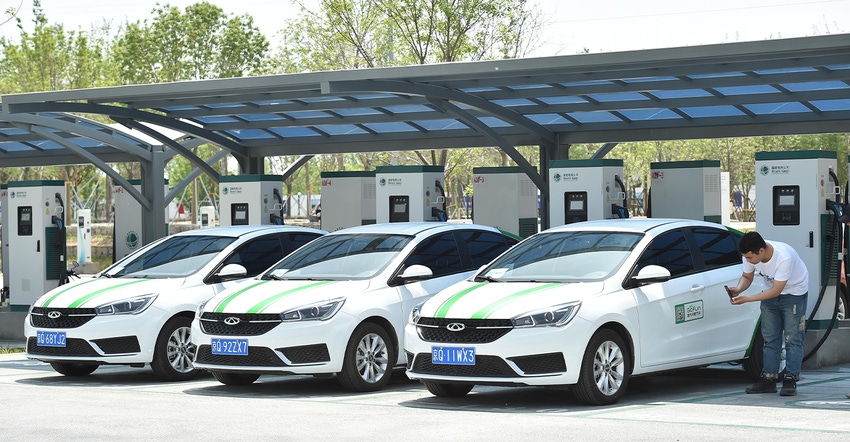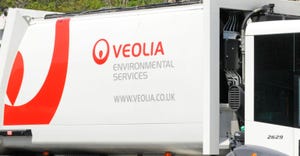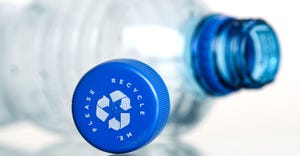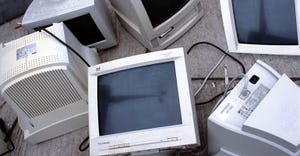Battery Processing Must Quintuple to Meet EV-Driven Demand, Says Industry
.As electrification pushes on, battery manufacturing for EVs is expected to grow, but not nearly enough to meet demand. With that, comes tremendous demand placed on recyclers and processors to help bump capacity.

As electrification pushes on, battery manufacturing for EVs is expected to grow, but not nearly enough to meet demand. With that, comes tremendous demand placed on recyclers and processors to help bump capacity.
Waste360 spoke with Eric Frederickson, Call2Recycle’s managing director of Operations & Compliance, about what market activity to expect in the near and mid term; what it will take for industry to keep up with the fast-forwarding EV movement; and what waste collection fleets will need in the way of battery-powered trucks.
Waste360: What is the most recent, credentialed, forecast on the demand for battery materials to support manufacture of EV batteries?
Frederickson: In 2020, the U.S. capacity was reported to be approximately 8 percent (about 59 GWh) of the 747 GWh of global EV lithium-ion cell manufacturing. By 2025, U.S. cell manufacturing for EVs is expected to grow to 224 GWh while global capacity is anticipated to grow to 2,492 GWh.
The demand from U.S. annual sales of passenger EVs alone, however, is projected to exceed the expected 224 GWh of lithium-ion cell manufacturing capability in 2025. Lithium-ion batteries are the most common type of battery used in EVs and the primary market focus in driving domestic lithium-ion battery manufacturing. In order to meet the increasing demand for EVs, it is essential that we have a strong domestic battery manufacturing base. Source: Energy.gov National Blueprint for Lithium Batteries 2021-2030 (p. 12).
Waste360: What is the current capacity in North America to recycle EV batteries? By how much will that recycling capacity need to increase by what timeframe to meet growing demand?
Frederickson: With every new EV that is produced and sold, the recycling industry will be faced with a greater demand for more capacity. Based on information provided in the CA Lithium-ion Car Battery Recycling Advisory Group and other more updated industry announcements, there is currently at least 60,000 metric tons (132.3 million pounds) of annual U.S. domestic lithiumion battery (LIB) recycling capacity. However, the true estimate is likely to be higher since it does not account for capacity from an increasing number of smaller players in the market or new capacity that is scheduled to come online in 2023.
In 2022, EV sales reached 6 percent market share and totaled over 800,000 vehicles. In order to recycle this amount of batteries, we will need 300,000 metric tons of annual processing capacity, or four to five times of what is currently available.
However, that capacity won’t be needed for quite some time. EV battery life isn’t quite like ICE motors. Batteries degrade over time and may still be on the road when they have 50 percent range. Consider, though, that an EV battery will conservatively last 10 years.
According to the IEA, only around 100,000 BEV’s were sold in 2013. This puts current EV battery recycling demand in the neighborhood of 36,000 metric tons, or only 60 percent of the capacity that is currently available.
Waste360: How has limited recycling infrastructure been addressed by who? What trends are emerging to further address infrastructure issues?
Frederickson: As recently as 2016, Call2Recycle had to export LIBs to partners in South Korea and France for recycling because there simply wasn’t enough domestic recycling capacity available. This is no longer the case, but there still isn’t enough material to maintain active recyclers at full capacity. In fact, regional options have now emerged to help lower the cost and environmental impact of shipping batteries to a recycler. There are also other LIBs that need to be recycled. EV batteries will likely dominate the recycling landscape in the future, but this isn’t the case today.
Most of the end-of-life lithium ion batteries that are being recycled originate from consumer electronics, tools, and mobility devices like e-bikes and e-scooters. The growing use of lithium-ion batteries in all manner of applications is helping to build not only the capacity, but also the technology that will be needed to handle the influx of EV batteries.
Waste360: What other battery materials will need to be recycled that could feed the EV battery supply chain?
Frederickson: There is over 500GWh of battery production capacity announced for North America, enough to power over 5 million EVs. Those facilities produce a relatively large amount of production scrap that will also need to be recycled. In the near future, production scrap will make up much of the recycling capacity needed with the EVs being sold today and starting to come off the road.
Waste360: What would be the lifespan of a battery to power a heavy-duty truck, like a refuse truck, vs a battery for a car? And how much material goes into a refuse truck battery vs a car battery?
Frederickson: Refuse trucks are an interesting case. Their batteries will likely not be on the road for as long as those from passenger EVs, because once the range starts to diminish, the battery will need to be replaced. It is reasonable to say that commercial EVs will undergo multiple battery swaps in their lifetime, just as commercial ICE vehicles generally undergo multiple engine swaps before they are retired.
Commercial vehicles are driven all day, every day. But life is particularly hard for short-haul pickup and delivery vehicles like refuse trucks, which can have dozens or even hundreds of stops each day. This kind of use is hard on a vehicle, and it’s fair to say that a battery might only last 5 or 6 years.
Moreover, the batteries that power commercial EVs will need to be significantly larger than those in passenger vehicles. The battery on the Tesla semi is believed to be around 900kWh, almost 10 times the size of a passenger EV battery. Between the reduced lifespan and the increased size, batteries for commercial EVs like refuse trucks will need 20 times the material required for a single passenger vehicle.
Waste360: Do EV batteries afford any advantages for short-haul trucks?
Frederickson: There is one potential saving grace. Short-haul trucks, like refuse trucks, do not need the range of an over-the-road semi. They typically drive around 100 to 150 total miles in a day, far less than the stated 500-mile range of the Tesla semi. This means that refuse trucks will be great candidates for batteries with lower energy density compared to passenger vehicles.
Applications like this often use a type of lithium-ion battery called an LFP, or lithium iron phosphate. Several automakers have announced that they will be using LFP batteries in their standard range vehicles, and it’s likely that they will be used in refuse trucks as well. This is good news because LFP batteries don’t use nickel.
About the Author(s)
You May Also Like




